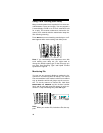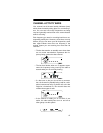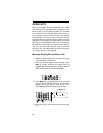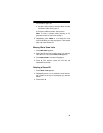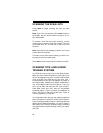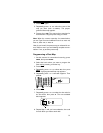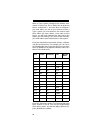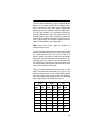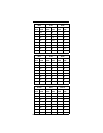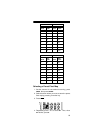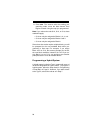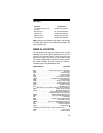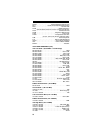
53
The size codes selected by a Type I system designer
depend on the specific needs of the system's users.
Some organizations might want many subfleets with
only a few radios each, while another organization
might want only a few subfleets, with many radios each.
To scan Type I systems, you must select or program a
fleet map with the same size code assignments as the
trunked system. If you do this accurately, you will track
all the fleet and subfleet combinations used by the sys-
tem. In other words, you will hear complete communi-
cations while monitoring a trunked system.
Note: Preset fleet maps might be available at
www.trunkscanner.com
.
If you do not already know the size codes used, you will
have to guess them. But since you do not have to figure
out all the blocks at once, this is not as hard as it
seems. Select a size code for a block, then press
SRC
.
Now listen to the communications. If you decide you are
receiving most of the replies to the conversations with
IDs assigned to the block you just programmed, then
you have probably selected the right size code and can
work on the next block of the map.
There are 16 preset fleet maps to choose from, and it is
best to start with these when setting up a Type I or hy-
brid trunk tracking bank. If none of the following preset
fleet maps allow you to follow complete conversations,
then you probably need to program your own fleet map
(see “Programming a Fleet Map” on Page 51).
E1P1 E1P2 E1P3
Block
Size
Code Block
Size
Code Block
Size
Code
0S110S40S4
1S111S41S4
2S112S42S4
3S113S43S4
4S114S44S4
5S115S45S4
6 S11 6 S4 6 S12
7 S11 7 S4 7 (S12)




